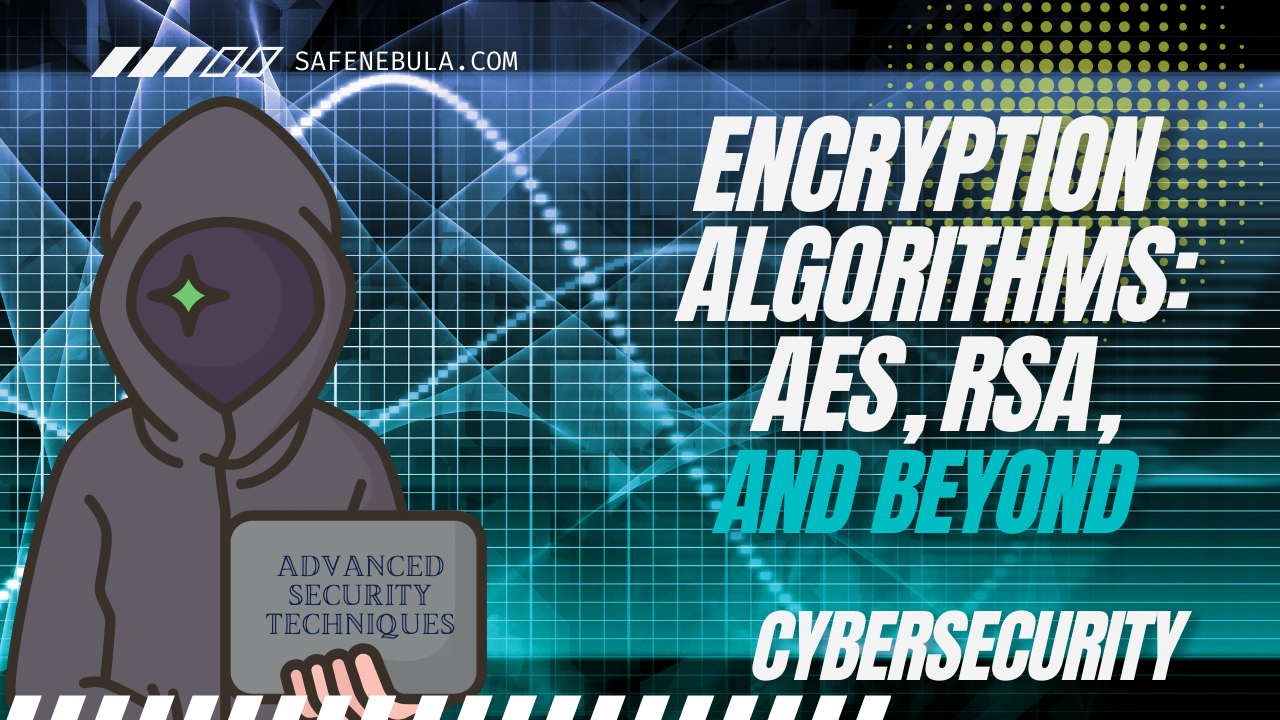Encryption stands as the guardian of digital information, transforming readable data into secure codes that shield our most sensitive information from unauthorized access. Among the myriad of encryption algorithms, AES (Advanced Encryption Standard) and RSA (Rivest-Shamir-Adleman) are foundational to modern cybersecurity. This article delves into how these algorithms work, their unique strengths, and their pivotal role in securing online communications.

Advanced Encryption Standard (AES)
What is AES? AES is a symmetric key encryption algorithm, which means the same key is used for both encrypting and decrypting data. It’s widely regarded for its speed and security, making it the gold standard for encrypting digital data.
How AES Works AES encrypts data in fixed blocks; the standard block size is 128 bits, though keys can be 128, 192, or 256 bits long. The process involves several rounds of transformation, including substitution, permutation, mixing, and adding keys. The number of rounds depends on the key size—10 rounds for 128-bit keys, 12 for 192-bit keys, and 14 for 256-bit keys.
Applications and Strengths AES is versatile, securing everything from file encryption software and secure email services to Wi-Fi networks and VPNs. Its main strengths include its resistance to all known attacks (except for brute force), efficiency in both software and hardware, and its flexibility in terms of block and key sizes.
Rivest-Shamir-Adleman (RSA)
What is RSA? RSA is an asymmetric algorithm, utilizing a pair of keys for encryption and decryption—a public key for encrypting messages and a private key for decrypting them. This key pair mechanism underpins RSA’s utility in secure data transmission over unsecured channels.
How RSA Works RSA’s security hinges on the computational difficulty of factoring large prime numbers. The public and private keys are generated together before encryption and decryption processes take place, ensuring secure communication even if the public key is openly shared.
Applications and Strengths RSA is pivotal in digital signatures, secure email, VPNs, and securing web browsers through SSL/TLS certificates. Its strengths lie in the secure key exchange and the ability to provide digital signatures, ensuring data integrity and authenticity.
Beyond AES and RSA
While AES and RSA are cornerstones of encryption, the field is vast and continuously evolving. Other notable algorithms include:
- ECC (Elliptic Curve Cryptography): Offers stronger security with smaller key sizes, making it efficient and increasingly popular for mobile devices.
- Quantum Cryptography: Leverages quantum mechanics principles to develop theoretically unbreakable encryption, though it’s still in its nascent stages.
Conclusion
Understanding AES, RSA, and the broader spectrum of encryption algorithms is essential for anyone looking to navigate the complexities of cybersecurity. These algorithms not only protect data but also ensure that our digital interactions remain confidential and secure. As cyber threats evolve, so too will encryption techniques, continuing to safeguard the digital frontier.
